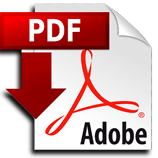Pengaruh Nilai Ekspor Besi Baja Indonesia Ke 10 Negara Tujuan
Abstract
Â
Iron & Steel is the third leading commodity after CPO and coal in Indonesia. The purpose of this study is to analyze competitiveness and the factors that influence the value of Indonesian steel exports to 10 destination countries using a gravity model. The method of analysis of this research is quantitative with the analytical technique used is RCA to analyze competitiveness and the gravity panel data model to analyze the factors that influence Indonesia's iron and steel exports. The data used in analyzing is secondary data for the annual period obtained from the World Bank, the Central Bureau of Statistics, Uncomtrade, IMF, CEPII. The results of the data analysis show that the average Indonesian steel commodity shows an RCA value of < 1, which means that the Indonesian steel commodity is not yet highly competitive. Meanwhile, the variables GDP per capita, price, and distance to importing countries in the gravity data panel model affect the value of Indonesia's iron and steel exports by showing a probability of <0.5. In contrast to the variables of inflation, exchange rate, and production of the importing country in the gravity data panel model, they do not affect the value of Indonesia's iron and steel exports by indicating a probability of > 0.5.
Keywords
Full Text:
PDFReferences
Gujarati, D. N. (2003). Basic Econometric. Mc Graw-Hill.
Hidayat, R, Poernomo, E., & Waluyo, M. (2018). Bisnis Ekspor dan Impor. CV. Selembar Papyrus, 2. http://eprints.upnjatim.ac.id/7881/
Julfiansyah, D. (2016). Pengaruh investasi PMA/PMDN dan jumlah penduduk terhadap PDRB dan PAD Kota Samarinda [Universitas Muhamadiyah Malang].InHttps://Medium.Com/.https://medium.com/@arifwicaksanaa/pengertian-use-case-a7e576e1b6bf
Kania, A. (2014). Analisis Daya Saing Dan Faktor-Faktor Yang Mempengaruhi Ekspor Cpo Indonesia Ke India Dan Belanda. Institut Pertanian Bogor.
Kementrian Perindustrian. (2022). Besi Indonesia. Peluang Investasi Besi Indonesia, 42.
Laili, N. (2021). Analisis Daya Saing Dan Faktor-Faktor Yang Mempengaruhi Ekspor Produk Alas Kaki Indonesia Ke Amerika Serikat Ditinjau Dalam Perspektif Ekonomi Islam. Jurnal Ilmiah Ekonomi Islam, 7(2), 1019–1029. https://doi.org/10.29040/jiei.v7i2.2385
Mankiw. (2000). Teori Makro Ekonomi Edisi Kelima . Jakarta: Erlangga.
Made Febby Anggia Dewi, Indrajaya, I. G. B. (2017). Tukar Terhadap Ekspor KertasIndonesia.Publikasi,1774,1803.https://ojs.unud.ac.id/index.php/eep/article/view/62239/36053
Milasari, A. S. (2010). Pengaruh Perubahan Nilai Tukar Terhadap Harga Barang Impor Dan Inflasi Dalam Negeri Di Beberapa Negara Industri. Jurnal Ekonomi, 14–35.
Mulyadi. (2017). Pengaruh GDP, Ukuran Ekonomi, Nilai Tukar, Penduduk dan Jarak Ekonomi Terhadap Ekspor Indonesia ke Negara ASEAN + 6 : (Pendekatan Model Gravitasi). Jurnal Progres Ekonomi Pembangunan ( JPEP ), 2(2), 1–22.
Nazir, M. (1988). Metode Penelitian. Jakarta: Ghalia Indonesia.
Novianti, A. (2009). Analisis pengaruh perubahan. Fe Ui, 9–40.
Nugroho, P. W. (2012). Faktor- Faktor Yang Mempengaruhi Inflasi. Skripsi, 83.
Philip, K. (1997). Manajemen Pemasaran. 21(3), 295–316.
Prabayanthi, M. A. D., & Saskara, I. A. N. (2021). Analisis Daya Saing Dan Faktor-Faktor Yang Mempengaruhi Ekspor Perhiasan Indonesia. 10(7), 3075–3103. https://ojs.unud.ac.id/index.php/eep/article/view/61547
Pradipta, A., & Firdaus, M. (2015). Competitive position and factors affecting Indonesian fruit exports. Jurnal Manajemen & Agribisnis, 11(2), 129–143.
Pusat Pengkajian Perdagangan Luar Negeri. (2022). Neraca Perdagangan April 2022 Kembali Surplus, Ditopang Oleh Kinerja Ekspor Yang Kembali MencatatkanRekorTertinggi. April.file:///C:/Users/User/Downloads/file_kajian_kinerja_perdagangan_ekspor_impor_2022060210442451rubenx9q.pdf
Porter. (1990). The Competitive Advantage of Nations. Newyork (USA): Free.Pr.
Rahman, H. (2021). Perdagangan internasional dan strategi pengendalian impor. LPU-UNAS.
Salvator, D. (1996). Ekonomi Internasional. Terjemahan. Jakarta: Erlangga.
Salvatore, D. (1997). International Economic. Edisi Kelima. Terjemahan H. Muandamar. Ekonomi Internasional. Edisi Kelima Jilid 2. Jakarta: Erlangga.
Santi, F. (2021). Model Regresi Panel Data dan Aplikasi Eviews. Econometric, 2, 1–19.
Santosa, A. B. (2017). Analisis Inflasi di Indonesia. Prosiding Seminar Nasional Multi Disiplin Ilmu & Call Papers UNISBANK Ke-3 (SENDI_U 3) 2017, 445–452.
Sukirno, S. (2002). Makro Ekonomi Modern. Jakarta: PT Rasa Grafindo Persada.
DOI: http://dx.doi.org/10.30742/equilibrium.v19i1.2789
Refbacks
- There are currently no refbacks.
Copyright (c) 2023 Equilibrium: Jurnal Ekonomi-Manajemen-Akuntansi
Indexed By:
Equilibrium by http://journal.uwks.ac.id/index.php/equilibrium is licensed under a Creative Commons Attribution-ShareAlike 4.0 International License.
Office: EQUILIBRIUM
Faculty of Economics and Business Universitas Wijaya Kusuma Surabaya
Dukuh Kupang XXV No. 54 Surabaya, Indonesia 60225
Phone: +62315613231
email: equilibrium@uwks.ac.id















